Can Leo Houlding rewrite the rules of Antarctic exploration?
Simply sign up to the Life & Arts myFT Digest -- delivered directly to your inbox.
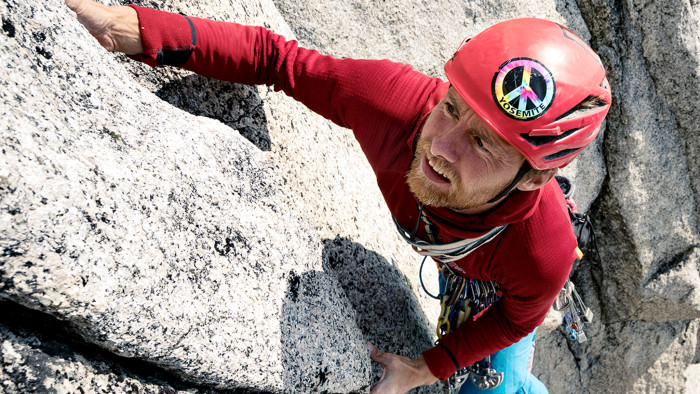
What promises to be the most audacious and potentially groundbreaking polar expedition in a generation was nearly thwarted by a pile of Cumbrian logs. “I’m going to be away for three months, so I was trying to get the log store at home sorted beforehand,” says Leo Houlding, holding up a thumb bandaged like something from a cartoon. “I was chopping kindling and I’ve got this super-sharp axe . . . about 10 seconds earlier I’d been thinking, ‘If I chop my thumb off, it could be a really stupid way to end the expedition before it’s even begun.’ ”
We are talking in the members’ lounge of the Royal Geographical Society, a vaulted room lined with bookcases at the top of the rambling Kensington pile that has been the organisation’s home since 1913. An exhibition of photographs from Shackleton’s 1914-17 Trans-Antarctic expedition fills the lobby outside the room, familiar black and white images of a ship trapped among sparkling ice.
That expedition’s objective was what Shackleton called the “last great journey”, an overland crossing of the entire continent, between the Ronne and Ross Ice Shelves — a goal that eluded the 56-strong team, three of whom perished. A century on, Houlding is about to depart south for Antarctica on a trip that, if successful, could become recognised as the first in a new era of great journeys. “It’s 21st-century exploration,” he says, “at the edge of impossible.”
With just two colleagues, he too will attempt a continental crossing — still a prized goal for modern teams but in this case just the means of accessing the main challenge, the never-climbed-before south face of the Spectre, a smooth granite spire in what is the most remote mountain range on earth. Key will be using kites, similar to those used for kitesurfing, to enable the team to travel vast distances, independently and at speed.
“Make no mistake, it is a hell of a thing they are undertaking,” Sir Chris Bonington, the UK’s best known mountaineer, told me by phone last week. “There are lots of incredibly impressive unsupported journeys being done in Antarctica now, but this is very, very different to what has gone before.”
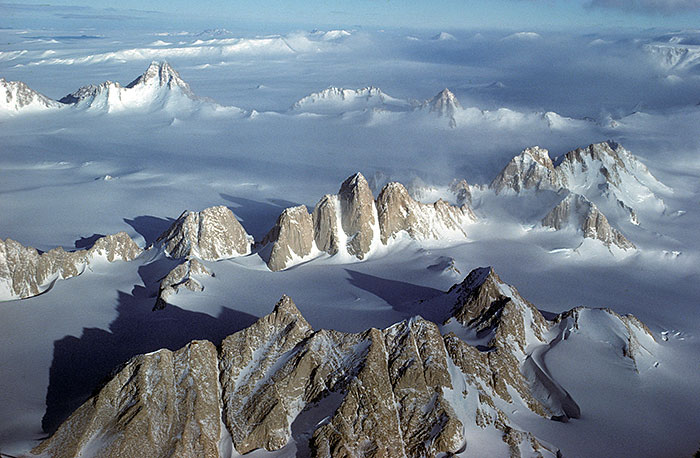
Antarctica remains the Earth’s last great wilderness but it isn’t quite as lonely as it was. During the next three months, at least 92 people will attempt to ski to the pole or across the continent, many of them claiming some kind of “first”, albeit on routes established almost a century earlier.
Among them will be the “Ice Maidens”, six women from the British Army aiming to be the first all-female team to cross the continent. Norwegian Astrid Furholt will attempt to be the first woman to repeat Roald Amundsen’s 1911/12 route, starting on the northern edge of the Ross Ice Shelf, where Amundsen arrived aboard the Fram, rather than on the edge of solid land. The well-known British athlete Ben Saunders will try to make the first “solo, unsupported and unassisted” crossing — meaning without using any drop-offs of food or fuel, and without using a kite, dogs or anything else to help propel him. Robert and Barney Swan will attempt a double — first father and son team to ski to the pole, and first to use only renewable energy to power cooking and ice melting.
Houlding’s first bold move is to dispense with any attempt to notch up a record on one of the benchmark routes. “We’re not even going to the South Pole,” he says. “To be honest, it would have been a lot easier to raise the funds if we were doing something more recognisable — the highest unclimbed peak on the continent, say. But that’s not the interesting thing for me, it’s much more about the shape and the aesthetics and the difficulty. When you see a photograph of the Spectre, you understand.
“The truth is that the big-ticket items were all sold in the 20th century — there are no unclimbed 8,000-metre peaks, the big polar routes have been done. In the 21st century, things have to be a little bit more creative.”
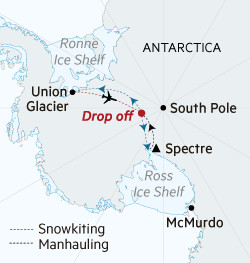
On November 17, Houlding, Mark Sedon from New Zealand and Frenchman Jean Burgun will be dropped in the middle of nowhere — at 88° south, 110° west, a point dictated by the payload and thus range of the Twin Otter aircraft that will fly them from base camp at Union Glacier. There they will begin to harness the katabatic winds — a phenomenon that sees cold, dense air from the polar plateau flow downhill towards the coast, generating reliable winds that should be ideal for kite-skiing. In all, they will cover more than 2,000km over 70 days, kite-skiing from the drop off down to the Organ Pipes, a series of sharply pointed peaks in the Gothics range, containing their main objective, the 2,020m-high Spectre. After 20 days’ climbing, they will kite the 80km to the edge of the Ross Ice Shelf, then return to the drop off — walking because they will be against the prevailing wind — then turn north, pick up the winds and make a run for Union Glacier.
“Kite assistance has been around for a long time, but it’s really come of age in the last five years, as technology from kitesurfing wings has transferred over. Now they’re really safe, really powerful and they really work. Realistically when you are man hauling [walking on skis, dragging a sled behind] you’re looking at 25km a day. But on a good day kiting, you can do 250km without breaking sweat.”
Crucially the kites also mean the expedition can carry more kit, 200kg per person, including the 37kg of climbing gear that will enable them to tackle a wall as technical as the Spectre’s south face. The mountain has been climbed only once before, from the much more straightforward north side, by the late US mountaineer Mugs Stump and his geologist brother Edmund, now a professor at Arizona State university. He remains one of the few people to have seen the Spectre up close. “Leo will be traversing 100 miles of nearly continuous crevasse fields on his approach and exit along Scott Glacier, but when he reaches the Gothic mountains, he will be camped in one of the most peaceful, beautiful spots on the planet,” Stump told me via email. “The prize is the Spectre, the most dramatic spire in all of the Transantarctic Mountains. Leo will be doing it the hard way, straight up the nearly blank south face. The hair on my arms stands up just thinking about it.”
The speed of movement, the size of the team and the commitment involved — tackling such a technical climb with no support network, literally thousands of miles from the nearest hospital — is prompting comparisons with the major shift in Himalayan climbing in the 1970s, from so-called “siege” tactics to “alpine-style” attempts. Siege expeditions used huge teams (Bonington’s 1975 Everest Southwest Face expedition had more than 100 people) to establish camps progressively higher up the mountain, fixing ropes as they went. Alpine style meant small teams, moving fast, carrying all their equipment and supplies and leaving no trace. “Alpine-style climbing is the concept of rising up to the challenge rather than breaking it down into manageable chunks,” says Houlding. “And this is a progressive, new-school way of doing that.”
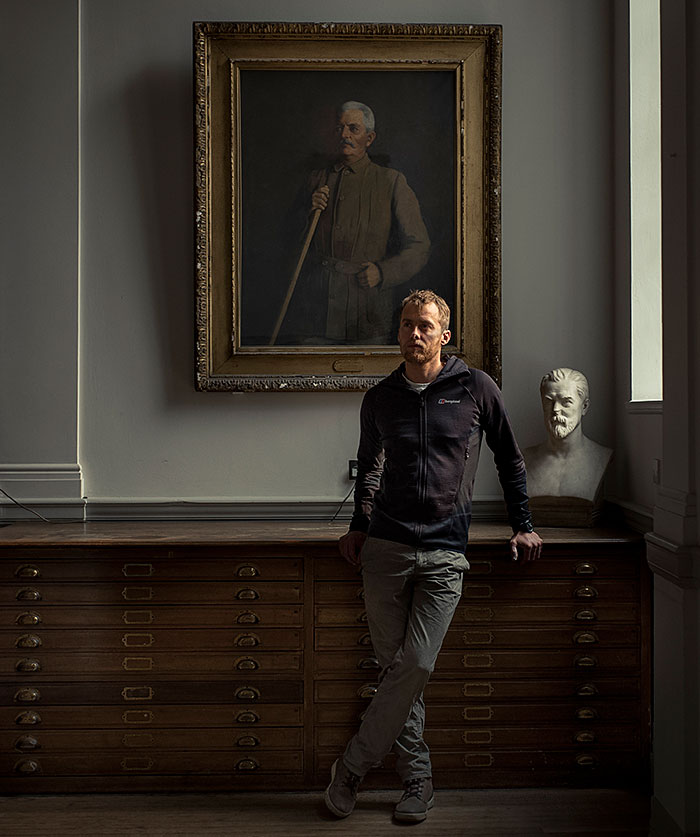
Houlding, 37, is in some ways an unlikely successor to the heroic ghosts that haunt the corridors of the RGS. Its celebrated alumni — Shackleton and Captain Scott, Wilfred Thesiger, Ranulph Fiennes et al — were typically former public-school boys and army officers, deeply rooted in the establishment and celebrated above all for their stoic endurance of hardship. Houlding is the son of a joiner from Cumbria’s Eden Valley, who left the local school at 16 to chase his dream of becoming a professional climber. Quickly he became feted as a prodigy of the sport, known both for the difficulty of the routes he was pioneering and his love of a good party afterwards. At 20, a profile in the Observer Sport Monthly magazine announced his arrival on the world stage by dubbing him climbing’s “punk rock star”.
Leo Houlding: Updates from Antarctica
Life in the freezer
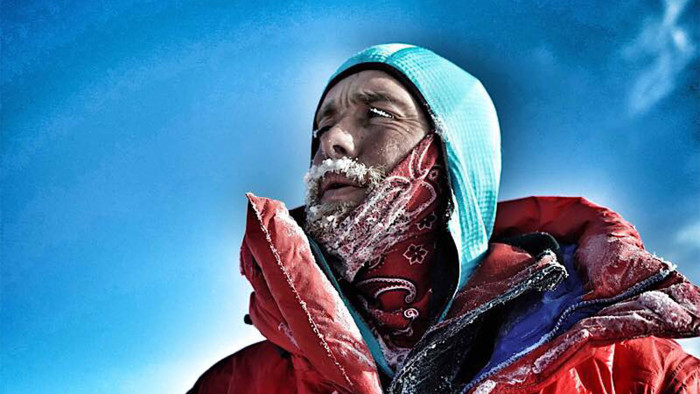
Meticulous plans vs the harsh realities of the coldest continent
Danger and delight

Houlding tastes success but has a close call with a crevasse
Christmas in Antarctica
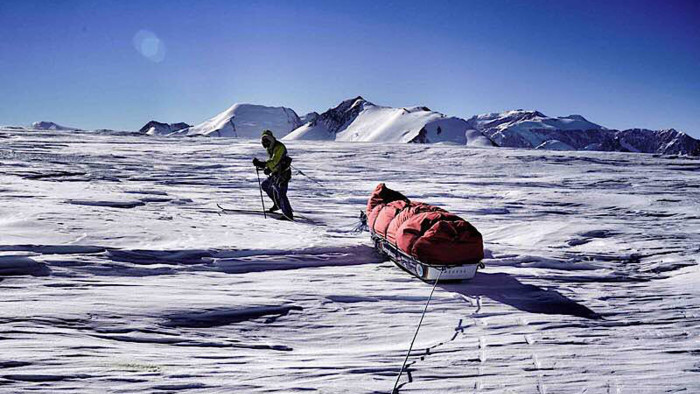
Houlding hurries to reach a food cache in time for the holiday
Like many leading mountaineers and adventurers, he voices frustration with a growing lack of authenticity and integrity in the field. “Everest is a classic example — on the normal routes, it’s high-altitude tourism. In some countries, someone who has been guided up Everest, literally having their bag carried and having been dragged to the top, can make a career as an inspirational speaker about their conquest.”
Mainstream brands, from luxury watches to brewers and carmakers, are increasingly keen to align themselves with adventure, often using social media to do so. The resulting demand for sponsored content is creating an alluring potential career path for what Shane Winser, expeditions adviser at the RGS for more than 40 years, calls “wannabe explorers”. “Anyone can be famous through digital media and that’s the problem,” she says. “How do people like Leo help the public understand the difference between someone who dresses up and buys a trip and someone who has spent their whole career incrementally pushing the limits of their chosen field? I think we’ve seen a real blurring of the lines between what is an adventure holiday and what is an expedition.”
In Antarctica, that process began in the late 1980s, when a company now called Antarctic Logistics and Expeditions started flying mountaineers into Antarctica to climb Mount Vinson, the continent’s highest peak. Over the following three decades the company has expanded so that it now offers a full menu of experiences: starting with trips that drop well-insulated holidaymakers at the pole for a glass of champagne, rising to guided trips trekking all the way to the pole. Aspiring adventurers can visit the ALE website and pick their route and departure date.
About 50 people will do its “ski the last degree” trips this season, being flown to within 69 miles of the pole. “They can say they’ve skied to the South Pole,” says Houlding. “In some cases, the fact they were dropped off at 89° south can be quite opaque in the communications.”
And yet, Houlding, Saunders and the other elite polar athletes remain hugely grateful to, and reliant on, ALE — it is only because of the logistical network it provides, funded by its tourism programmes, that independent expeditions such as theirs can afford to operate. The Spectre team is flying from Punta Arenas, Chile, to Union Glacier on ALE’s chartered Ilyushin 76, then on to the drop off in one of its three Twin Otters. Nevertheless the figures remain forbidding: that one-way internal flight is costing about £100,000, thanks to the huge expense of flying fuel into the Antarctic interior.
In all the Spectre expedition will cost £290,000, funded by sponsors including outdoor clothing company Berghaus, and grants, most significantly £50,000 from the Mount Everest Foundation, a body jointly administered by the RGS and the Alpine Club. It was set up to distribute the ongoing proceeds of the 1953 Everest expedition, accrued from royalties and events. Usually it gives grants of between £1,000 and £4,000 to exploratory expeditions but so impressed were its trustees by the Spectre project that it awarded its first “super-grant” of £50,000.
Being directly funded by Edmund Hillary’s success on Everest, the seminal mountaineering moment of them all, can only add to the weight of expectation, but Houlding seems typically relaxed, confident. The cut in his thumb is deep but clean, and will easily heal before the start. The danger of the team not getting along — the other two have only met once — is dismissed (“I’m a very good judge of character”). The drill, which would allow them to fix bolts to the rock face — massively improving their chances of success, but frowned on ethically — is being defiantly left at home.
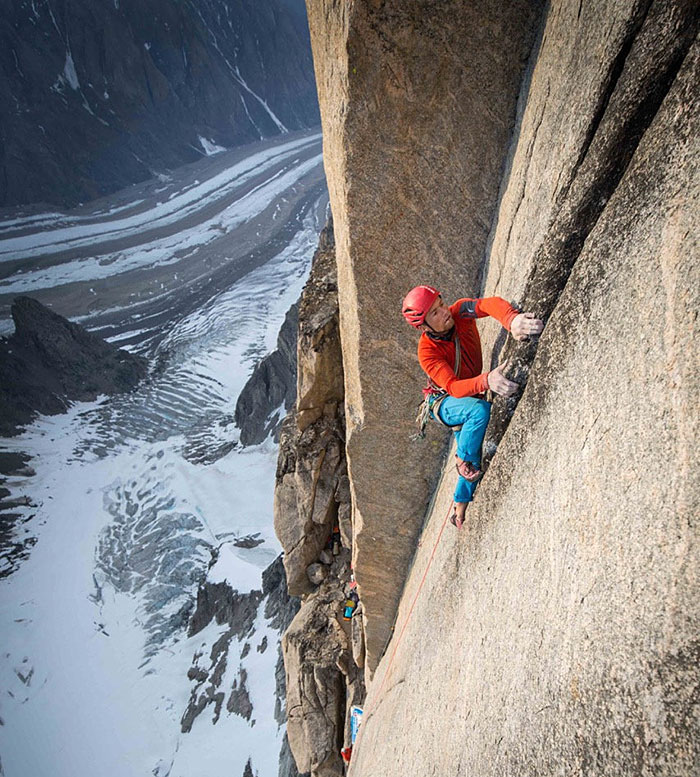
It’s only when conversation turns to his children, Freya, 4, and Jackson, 1, that he seems suddenly anxious. “It’s just dawning on me, the impact of going away for that long, missing Christmas. In my heart I’m hoping that if the winds are right, it should be possible to get back two, three, even four weeks ahead of schedule. But then, there’s a classic saying in polar trips — ‘Keep it simple, stupid’ — and this is really not a simple trip. ”
Leo Houlding will be writing a series of expedition dispatches for the FT. For more on his trip see spectreexpedition.com. Explore, the RGS’s annual expedition planning seminar, takes place in London November 10-12, see rgs.org for details
Follow @FTLifeArts on Twitter to find out about our latest stories first. Subscribe to FT Life on YouTube for the latest FT Weekend videos. Sign up for our Weekend Email here
Photographs: Leo Houlding; Tom Jamieson
Holidays — and challenges — on ice
Flying to the pole Guests fly from Punta Arenas, Chile, to the Union Glacier Camp for a four-day stay. On one of those days they fly to the pole, a journey of between four and six hours, then spend several hours there before returning. Six days in all; $49,750; next departure December 12
Camp at the pole Similar to the trip above, but guests walk from the pole to a camp 1km away, where they have a celebratory dinner and spend the night. Seven days; $53,400; next departure December 29
Ski the last degree From Union Glacier, participants fly to 89° south, leaving them 69 miles to ski to the pole as part of a guided group. 12 days; $63,250; next departure December 7
Hercules Inlet to the pole A classic challenge, skiing 700 miles from the Ronne Ice Shelf to the pole, led by a guide. Participants can join as individuals or as groups. 56 days; $69,950; next departure November 15
All are run by Antarctic Logistics and Expeditions, antarctic-logistics.com
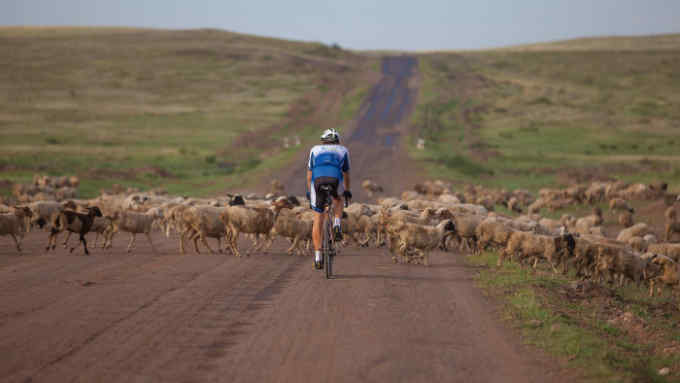
Comments